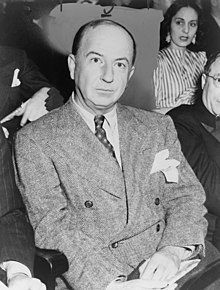Stark Young
| Stark Young | |
|---|---|
 |
|
| Born |
October 11, 1881 Como, Mississippi, United States |
| Died | January 6, 1963 (aged 81) Austin, Texas, US |
Stark Young (October 11, 1881 – January 6, 1963) was an American teacher, playwright, novelist, painter, literary critic, translator, and essayist.
Stark Young was born on October 11, 1881 in Como, Mississippi. His father, Alfred Alexander Young, was a physician. His mother, Mary Clark Starks, was a direct descendant of the McGehees, an old planter family; she died when he was nine years old. Shortly after her death, Young was sent to live the McGehee Plantation in Senatobia, Mississippi.
Young entered the University of Mississippi at the age of 15 and graduated from that institution in 1901. He completed his Master's Degree at Columbia University in New York in 1902.
Young taught at the University of Mississippi in 1905-1907, and then moved to the University of Texas at Austin. There he established the Texas Review and became involved with theater. In 1915 he moved to Amherst College in Massachusetts, where he taught English until 1921.
He resigned to pursue other interests and moved to New York City. In New York, he was appointed as an editor of Theater Arts Magazine and as drama critic for The New Republic. Young worked at The New Republic until his retirement in 1947. During this period he was also professionally involved with the theater in New York and wrote several plays. Young's plays include: Guenevere, Addio, Madretta, At The Shrine, The Star In The Trees, Twilight Saint, The Dead Poet, The Seven Kings and the Wind, and The Queen of Sheba, to name a few.
In 1930, Young contributed to the agrarian manifesto, I'll Take My Stand. He was one of 12 Southern writers, a group including Allen Tate, known as the Southern Agrarians. Young drew on the traditions of his Southern upbringing for inspiration. He wrote essays, journalistic articles, and collections of stories that drew on these sources. He also published four novels dealing with Southern themes.
So Red the Rose (1934), perhaps Young's finest novel, had a brief period of popularity as the archetype of the Southern Civil War novel and dealt with the aftermath of the war. In 1935, his novel was adapted as a film of the same name directed by King Vidor and starring Margaret Sullavan. Described by its author as a novel of the affections, the book is still in print. The phenomenal successes of Margaret Mitchell's Gone With the Wind (1936) and its film adaptation of 1939 pushed Young's book into the background.
...
Wikipedia
